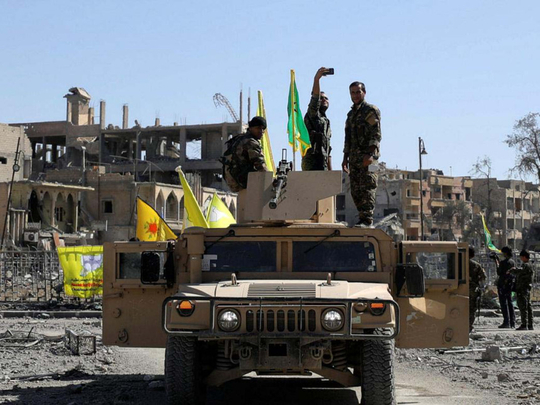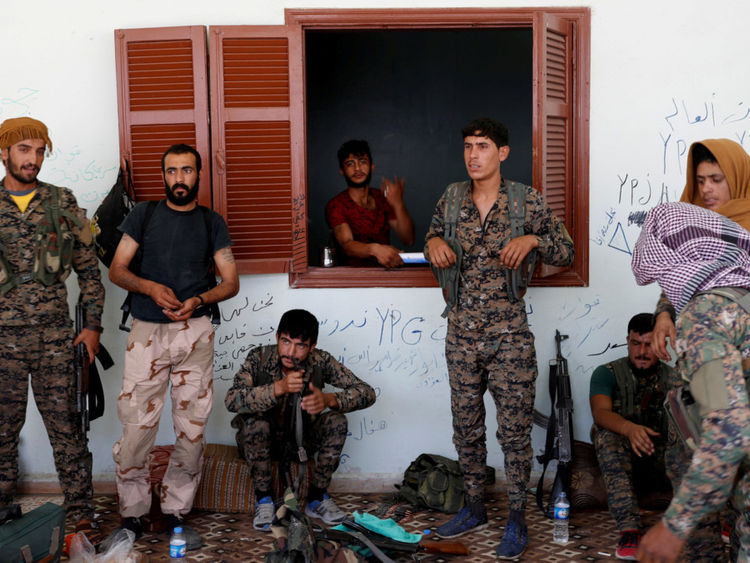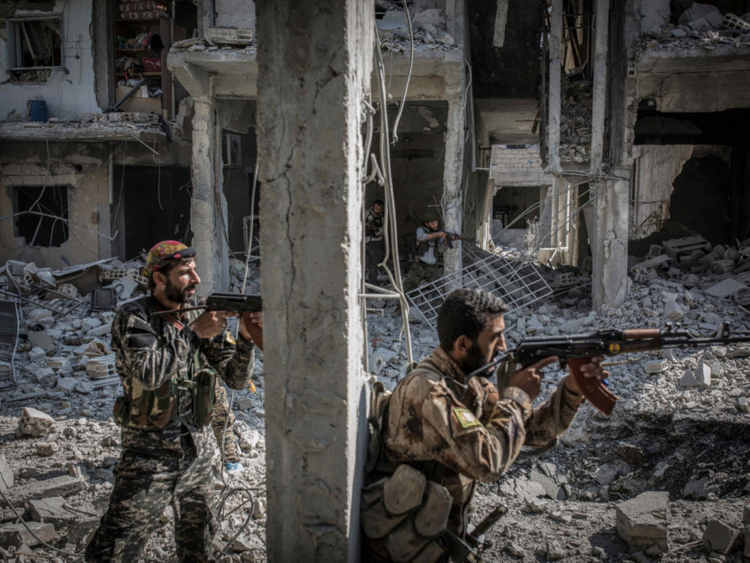
Dubai: Of all the new ‘realities on the ground’ that the Syrian war has produced, one of the least known is the huge portion of the country’s northeast that calls itself the ‘Democratic Federation of Northern Syria’. It is also referred to as the ‘Rojava’ region, and mostly comprises Syria’s Kurdish areas. It has enjoyed virtual autonomy since 2012. But, in line with the trajectory the Syrian war, the Kurds now find themselves sitting down for talks with the regime. How did it come to this?
Kurds, a mostly Sunni Muslim people, make up around 15 per cent of Syria’s population but have long faced discrimination at the hands of the Alawite-dominated Baath regime, with many Kurdish civilians stripped of their nationality after a “census” in 1962. When Syria’s current conflict erupted in 2011, the Kurdish population generally sought to adopt a position of neutrality. In a strategic move, Bashar Al Assad tried to befriend the Kurds from the earliest days of the conflict, granting citizenship to 300,000.
File photo: Two armed soldiers of the Syrian Democratic Forces (SDF) standing next to a column of a destroyed building while battles against the Daesh militia continue in Raqqa, Syria, 12 August 2017. AP
In 2012, the regime withdrew from Kurdish-majority areas in the north and east. This allowed the Kurds to consolidate control on the ground. In 2013, the Democratic Union Party (PYD), the political arm of the People’s Protection Units (YPG) Kurdish armed group, announced the establishment of a semi-autonomous zone.
Federal region
The aforementioned ‘Democratic Federation of Northern Syria’ came into being in this territory in 2016. It consists of three self-declared cantons: Afrin in Aleppo province, Jazira (Hasakeh province) and Euphrates (which includes parts of Aleppo and Raqqa provinces). This well organised initiative by the Syrian Kurds and their allies increasingly appeared as de facto autonomy, provoking hostility from Syria’s mainstream opposition forces and neighbouring Turkey. By 2016, the Kurds also came up with a constitution for the ‘federal region’, and held ‘communal’ elections to elect town councillors in 2017.
Since the start of Syria’s war, its Kurds have benefited from the chaos, and have especially capitalised on their anti-Daesh credentials to get military and economic aid from Western powers, particularly the United States. In 2015, Kurdish forces supported by coalition strikes ousted Daesh from Kobani, a symbolically important city on the Turkish border. The Syrian Democratic Forces (SDF), an all-Syrian alliance of 25,000 Kurdish fighters and 5,000 Arabs, was created in October 2015. Dominated by the Kurdish YPG, the alliance receives aid from the US, in the form of arms but also air support for their operations. In October 2017, the SDF overran Daesh’s de facto Syrian capital, Raqqa.
‘Enemy’ state
But the greatest enemy of the Kurdish aspirations in Syria is not the regime of Al Assad or Daesh. It is Turkey, which has taken a dim view of the developments on its border, and the influence they might have on its own, huge and restive Kurdish population.
In January 2018, the US-led coalition announced it was working to create a 30,000-strong border security force comprised of Kurdish and Arab personnel in northern Syria, around half of whom would be retrained SDF fighters.
This alarmed Ankara further, as it sees the YPG as the Syrian offshoot of the outlawed Kurdistan Workers’ Party (PKK) which has waged a three-decade rebellion in Turkey’s southeast. On January 20, 2018, Turkey launched a full-blown assault against the YPG-held enclave of Afrin, taking control of it on March 18. Turkey had already launched an offensive in northern Syria in August 2016, targeting both Daesh and the SDF. In mid-July 2018, the last Kurdish forces left Manbij, allied Arab fighters said, under a deal reached to avoid clashes with Turkey.
Lessons of Iraq
Ever since the spectacular failure of the Iraqi Kurdistan independence referendum in 2017 – after Iraqi troops quickly retook Kirkuk, and the United States, along with regional powers, made clear that they totally opposed moves by Iraqi Kurds for independence – the Kurds in Syria have realised that their position is tenous. America’s unwillingness to stop the Turkish invasion of Afrin showed the Kurds the limits of Western support for them.
Besides, memories in the Middle East tend to be long. The Kurds haven’t forgotten how the US abandoned them to Saddam Hussain’s mercy in Iraq, not once, but twice – in 1975 and 1991. They fear the US will leave soon, and have calculated that their best is to negotiate an autonomy deal with the regime of Al Assad.
It is from this perspective that one must view their move to reintegrate the areas they control into the rest of Syria.
Back to the regime fold
Late last month, a senior Syrian Kurdish official was in Damascus for talks with the regime with a delegation that included SDF members. The Kurds are trying to negotiate a political deal that preserves their autonomy. The SDF has given control of the key Tabqa Dam, which it captured from Daesh last year, to the regime. While the regime’s military withdrew from Kurdish areas towards the start of the war, it retained a civilian and municipal presence, even continuing to pay the salaries of civil servants. The SDF is now working in tandem with these civilian representatives of the regime. One of the leading Kurdish negotiator referred to the talks with the regime in Damascus as a “Syrian-Syrian political track”. But Al Assad may not accept the other dearly held aspiration of the Kurds, for a “decentralised, democratic Syria”.
“Al Assad will never go for any Iraq-style autonomous area,” Fawaz Gerges, Professor of Middle Eastern Studies at the London School of Economic, said in a phone interview from London. “The Kurds realise this is the beginning of the end of the Syrian war. They also know they have few options. Turkey is gunning for them. Their only effective course of action is talks with the regime.”
What the Kurdish-led administration in the northeast is now seeking from the regime is a sort of ‘informal autonomy’, said Gerges.
Al Assad wants to spread at least the nominal authority of his regime in all of Syrian territory. One of the biggest cards the Kurds hold is their control of most of Syria’s oil and water resources. “Both Al Assad and [his most powerful ally] Russia realise he cannot govern effectively without having resources. In this sense, there is a convergence of interests between the SDF and the regime. The Kurds want to prevent a regime offensive at all costs.”
- With inputs from agencies















